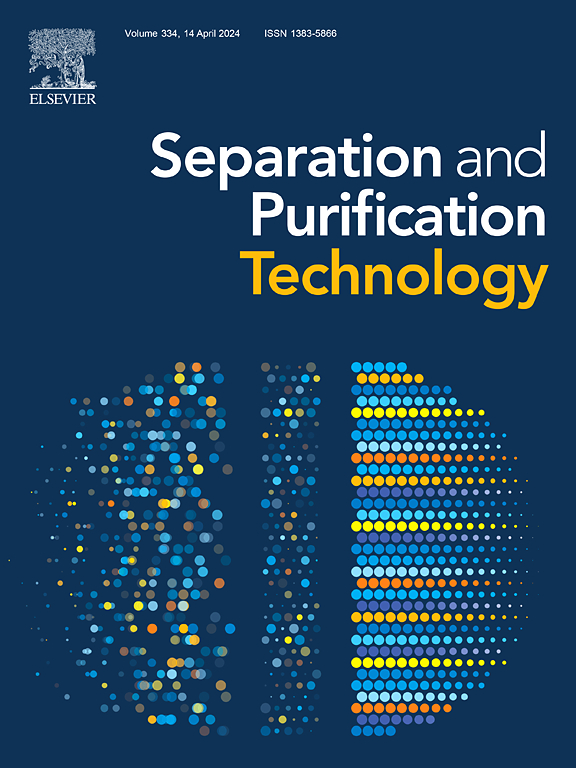Peroxymonosulfate activation by iron-cluster-modified Mn single atom catalyst for ciprofloxacin removal: Non-radical pathway dominated by 1O2 and high-valent metal–oxygen species
IF 8.1
1区 工程技术
Q1 ENGINEERING, CHEMICAL
引用次数: 0
Abstract
Atomic clusters have been recognized for boosting interactions with single-atom sites and activating peroxymonosulfate (PMS) to degrade pollutants. However, research on the synergies between different metals in these clusters and their impact on enhancing single-atom activity remains limited. This paper introduces an iron-cluster-modified manganese single-atom catalyst (FeMnac-NC) exhibiting exceptional catalytic activity. At low doses of the catalyst (FeMnac-NC, 0.05 g/L) and the oxidant (PMS, 0.2 g/L), the FeMnac-NC/PMS system recorded an impressive removal efficiency of 91.0 % in 5 min, exhibiting a kobs of 0.1038 min−1. Within this system, the active oxygen species identified included singlet oxygen and high-valent metal–oxygen species. X-ray photoelectron spectroscopy analysis revealed a significant presence of pyrrolic nitrogen in the material, which binds with Mn to create the primary active site. Based on calculations using the density functional theory, the redox cycling between iron clusters and manganese single atoms has been proved to improve the activation efficiency of the system. The system demonstrates high tolerance to environmental media containing anions and dissolved organic matter, showing notable degradation performance over a wide pH range. This research provides valuable insights for the development of high-performance catalysts that is well-suited for practical environmental purification applications.


求助全文
约1分钟内获得全文
求助全文
来源期刊

Separation and Purification Technology
工程技术-工程:化工
CiteScore
14.00
自引率
12.80%
发文量
2347
审稿时长
43 days
期刊介绍:
Separation and Purification Technology is a premier journal committed to sharing innovative methods for separation and purification in chemical and environmental engineering, encompassing both homogeneous solutions and heterogeneous mixtures. Our scope includes the separation and/or purification of liquids, vapors, and gases, as well as carbon capture and separation techniques. However, it's important to note that methods solely intended for analytical purposes are not within the scope of the journal. Additionally, disciplines such as soil science, polymer science, and metallurgy fall outside the purview of Separation and Purification Technology. Join us in advancing the field of separation and purification methods for sustainable solutions in chemical and environmental engineering.
 求助内容:
求助内容: 应助结果提醒方式:
应助结果提醒方式:


